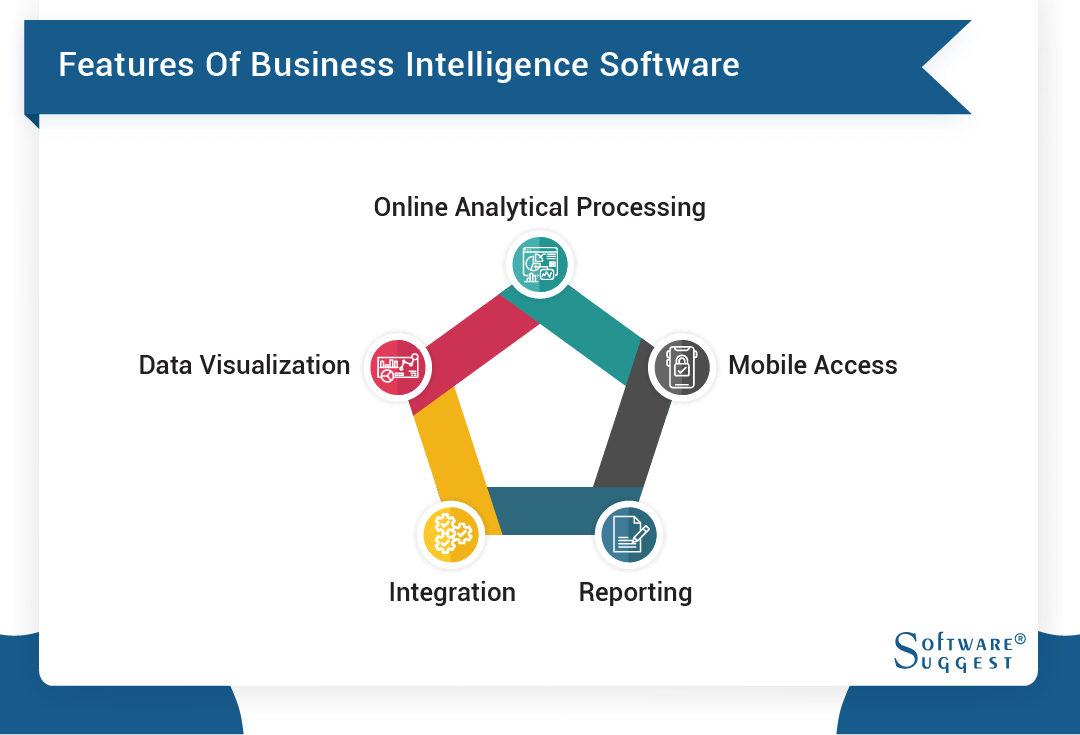
Demystifying Business Intelligence Software for Better Understanding
In today’s fast-paced business landscape, organizations are generating vast amounts of data every day. This data can be a valuable asset for businesses, providing insights that can inform strategic decisions, drive growth, and improve operations. However, making sense of this data can be a daunting task, especially for those without a background in data analysis. This is where Business Intelligence (BI) software comes in – a powerful tool designed to help organizations extract insights from their data and make informed decisions.
Despite its importance, BI software remains a mystery to many. In this article, we will demystify BI software, exploring its definition, key features, benefits, and how it can be used to drive business success.
What is Business Intelligence Software?
Business Intelligence software is a set of tools and technologies that enable organizations to collect, analyze, and visualize data from various sources. The primary goal of BI software is to provide stakeholders with actionable insights that can inform business decisions, drive growth, and improve performance.
BI software typically includes a range of features, such as:
- Data Integration: The ability to connect to various data sources, including databases, spreadsheets, and cloud-based applications.
- Data Analysis: Tools for analyzing and processing data, including data mining, predictive analytics, and statistical modeling.
- Data Visualization: Features for creating interactive and dynamic visualizations, such as dashboards, reports, and charts.
- Reporting: The ability to generate reports and dashboards that provide insights into business performance.
Key Features of Business Intelligence Software
While BI software can vary in its features and capabilities, there are several key features that are common to most solutions. These include:
- Self-Service Analytics: The ability for users to create their own reports and analyses, without relying on IT support.
- Cloud-Based Deployment: The ability to deploy BI software in the cloud, providing flexibility and scalability.
- Mobile Accessibility: The ability to access BI software on mobile devices, providing anytime, anywhere access to insights.
- Real-Time Analytics: The ability to analyze data in real-time, providing up-to-the-minute insights into business performance.
- Machine Learning and Artificial Intelligence: The ability to apply machine learning and artificial intelligence algorithms to data, providing predictive insights and recommendations.
Benefits of Business Intelligence Software
The benefits of BI software are numerous and well-documented. Some of the most significant benefits include:
- Improved Decision-Making: BI software provides stakeholders with accurate and timely insights, enabling informed decisions that drive business success.
- Increased Efficiency: BI software automates many manual processes, freeing up staff to focus on higher-value tasks.
- Enhanced Collaboration: BI software provides a single source of truth, enabling teams to collaborate and work together more effectively.
- Better Customer Insights: BI software provides insights into customer behavior and preferences, enabling organizations to develop targeted marketing campaigns and improve customer engagement.
- Competitive Advantage: BI software provides organizations with a competitive advantage, enabling them to respond quickly to changes in the market and stay ahead of the competition.
How to Choose the Right Business Intelligence Software
With so many BI software solutions available, choosing the right one can be a daunting task. Here are some factors to consider when selecting a BI software solution:
- Data Sources: Consider the types of data sources you need to connect to, and ensure the BI software can integrate with these sources.
- User Adoption: Consider the level of technical expertise of your users, and choose a solution that is easy to use and intuitive.
- Scalability: Consider the size of your organization and the volume of data you need to analyze, and choose a solution that can scale to meet your needs.
- Budget: Consider your budget and choose a solution that provides the best value for money.
- Vendor Support: Consider the level of support provided by the vendor, including training, documentation, and customer support.
Real-World Examples of Business Intelligence Software in Action
BI software is being used by organizations across a range of industries, from healthcare and finance to retail and manufacturing. Here are a few examples of BI software in action:
- Predictive Maintenance: A manufacturing company uses BI software to analyze sensor data from its machines, predicting when maintenance is required and reducing downtime.
- Customer Segmentation: A retail company uses BI software to analyze customer behavior and preferences, developing targeted marketing campaigns that drive sales and engagement.
- Financial Performance: A financial services company uses BI software to analyze financial performance, identifying areas for improvement and optimizing budget allocation.
- Supply Chain Optimization: A logistics company uses BI software to analyze supply chain data, optimizing routes and reducing transportation costs.
- Clinical Trials: A healthcare company uses BI software to analyze data from clinical trials, accelerating the development of new treatments and therapies.
Conclusion
Business Intelligence software is a powerful tool that can help organizations make sense of their data and drive business success. By demystifying BI software and understanding its key features and benefits, organizations can unlock the full potential of their data and gain a competitive advantage in the market. Whether you’re a seasoned data analyst or just starting out, BI software is an essential tool for anyone looking to drive business growth and improvement.
In this article, we’ve explored the definition, key features, and benefits of BI software, as well as how to choose the right solution for your organization. We’ve also looked at real-world examples of BI software in action, highlighting the diverse range of applications and use cases. By harnessing the power of BI software, organizations can unlock new insights, drive innovation, and achieve their goals.
Closure
Thus, we hope this article has provided valuable insights into Demystifying Business Intelligence Software for Better Understanding. We appreciate your attention to our article. See you in our next article!


